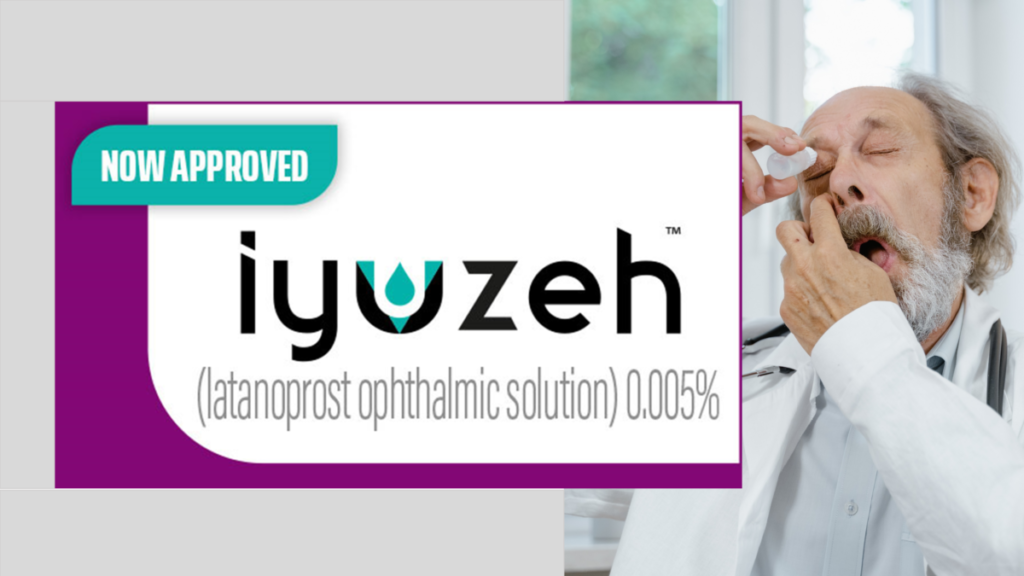Vision may change significantly with age. Open-angle glaucoma (OAG) is a common ophthalmic condition resulting in optic nerve damage and vision loss and is one of the leading causes of irreversible blindness globally. One of the main causes of OAG is increased intraocular pressure (IOP), which becomes a risk factor for developing ocular hypertension after the age of 40 once the IOP is consistently higher than 21 mmHg in at least one eye. Ocular hypertension is approximately 10 to 15 times more common than OAG, and using IOP-lowering medication may reduce the chances of developing OAG significantly.
Although there are currently various IOP-lowering medications available (for example Xalatan), most are formulated with preservatives such as benzalkonium chloride (BAK). BAK and other preservatives can be extremely irritating and uncomfortable for patients using the medications, often leading to moderate to severe symptoms of ocular surface disease.
Thea Pharma, Inc., has responded to this unmet need in the US with Iyuzeh. On December 15, 2022, the company announced in a press release that Iyuzeh was approved for New Drug Application (NDA) by the US Food and Drug Administration (FDA) for the reduction of elevated IOP in patients with OAG or ocular hypertension.
Iyuzeh is a latanoprost ophthalmic solution (0.005%), the most prescribed prostaglandin analogue in the US. It is also the first and only clinically proven preservative-free formulation of the medication. The new preservative-free formula addresses an unmet need amongst patients (and thus care providers), who will have reduced irritation from its use.
XTALKS WEBINAR: Patient Journey and Disease Progression — Exploring the Power of Images in Real-World Data
Live and On-Demand: Wednesday, January 25, 2023, at 1pm EST (10am PST)
Register for this free webinar to learn about the value of imaging data as a real-world data source, and the power of linking it with clinical data stored in electronic health records (EHRs) to inform research across the drug and device lifecycle for life sciences. Attendees will hear about ophthalmic imaging specifically and the challenges and opportunities that exist with using it outside of patient care.
Iyuzeh is Effective, Tolerable and Affordable
The success of Iyuzeh can be credited to scientists who were able to solubilize and stabilize latanoprost so that it does not require refrigeration at any point during manufacturing, distribution, or storage, like competing brands and generic latanoprost do.
In various clinical trials across the US and Europe, Iyuzeh consistently lowered IOP in subjects and was proven to be tolerable. In randomized, controlled clinical trials with patients with OAG or ocular hypertension with a mean baseline IOP of 19 to 24 mmHg, Iyuzeh (available as Monoprost outside of the US) lowered IOP by 3 to 8 mmHg versus 4 to 8 mmHg by Xalatan. Although the medications were equally effective at reducing IOP, Iyuzeh (Monoprost) was tolerated more by patients, with a 32 percent reduction in ocular symptoms compared to 14 percent with Xalatan.
Iyuzeh is taken as one drop in the affected eye(s), once daily in the evenings. Most people will notice reduction of IOP around three to four hours after administering the drops, with maximum efficacy occurring around eight to 12 hours post-administration. The effects last for around 24 hours. Hypersensitivity may occur to the active ingredient or other ingredients in the product, and in clinical trials the adverse events reported were conjunctival hyperemia and eye irritation.
The NDA FDA approval is a milestone for the Thea Group. Iyuzeh is their first approval for a prescription ophthalmic medication for a US subsidiary. For years, it has been used outside of the US, marketed as Monoprost, and has been the market-leading prostaglandin analogue in volume globally (e.g., in France, Germany, the UK, Italy and Canada). Prices for generic latanoprost are not too high, sitting around $77 for a 2.5 mL bottle without insurance, making it a relatively accessible option for most patients as it is typically covered by commercial health insurance.












Join or login to leave a comment
JOIN LOGIN